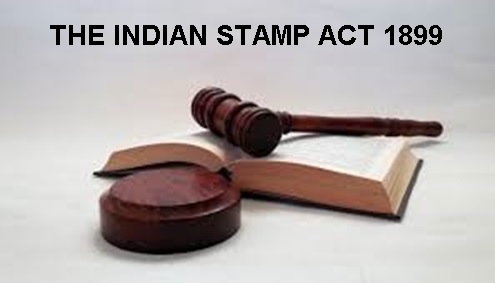A Quick Glance on the Process
India has introduced Insolvency and Bankruptcy Code, 2016 (Code) as a robust code to deal with individual as well as corporate insolvency and bankruptcy issues. The aim of the Code is to bring about a viable mechanism to resolve insolvency issues, both in corporate insolvency as well as in individual insolvency. While the Part II of the Code has been in force ever since the 01st December 2016 with respect to Corporate Insolvency, as regards insolvency issues of individuals and partnership firms, the Code has not yet been brought into force. Part III of the Code deals with Bankruptcy of individuals and partnership firms. While Part III is yet to be brought to force, it is pertinent to understand the procedure in brief, if in case Part III is brought to force and as to how the Code will function.
Who is a Bankrupt?
Section 79(3) of the Code states a “bankrupt” means – (a) a debtor who has been adjudged as bankrupt by a bankruptcy order under section 126; (b) each of the partners of a firm, where a bankruptcy order under section 126 has been made against a firm; or (c) any person adjudged as an undischarged insolvent; Under the scheme of the Code, when an individual debtor commits a default, he or his creditor is entitled to trigger the resolution process under the Code. Default, as defined under Section 3(12) of the Code means non-payment of debt, when whole or any part or instalment of the amount of debt has become due and payable and is not paid by the debtor or the corporate debtor, as the case may be. The provisions of the Code could be invoked and initiated even if the sum involved in the default is as low as Rs.1000/-. The Adjudicating Authority for bankruptcy proceedings is the Debt Recovery Tribunal established under the Recovery of Debts Due to Banks and Financial Institutions Act, 1993.
Fresh Start Process
A fresh start process is provided in the Code in respect of minor debts not exceeding Rs.35,000/- or where the gross annual income of the debtor does not exceed Rs.60,000/- or aggregate value of the assets of the debtor does not exceed Rs.20,000/- or where the debtor does not own a dwelling unit. A fresh start process is completely different form the insolvency resolution process in bankruptcy proceedings. In a fresh start process the debtor is completely discharged from his debts on the order of the Adjudicating Authority subject to compliance of process set therefor.
Insolvency Resolution Process
Once an application is made to the Adjudicating Authority under the Code by a debtor in default or by his creditor, the process envisaged for resolution of insolvency kicks in. The Code envisages appointment of a qualified and independent Resolution Professional to enquire into and recommend to the Adjudicating Authority, whether the application for resolution should be accepted or rejected on the basis of evidence of debt in default. After admission, a public notice is issued inviting claims in respect of the debts owed by the debtor and a list of creditors is prepared.
Thereafter, the debtor shall prepare, in consultation with the Resolution Professional, a repayment plan containing a proposal to the creditors for restructuring of his debts or affairs which should also include a provision to pay the fee to the Resolution Professional. The Resolution Professional too gives his report on the Repayment Plan. The Repayment Plan requires approval by a majority of more than three-fourth in value of the creditors. Thereafter it is placed for approval before the Adjudicating Authority, and if it is approved by Adjudicating Authority, it is binding on the debtor and the creditors as mentioned in the Repayment Plan.
While approving the Repayment Plan, the order of the Adjudicating Authority may also provide for directions for implementing the Repayment Plan. On such approval and on the basis of the approved Repayment Plan, the debtor may be discharged, depending upon whether the Repayment Plan provides for early discharge or discharge after implementation. The Resolution Professional is tasked with supervision of the Repayment Plan.
Under the Code, the stage until implementation of Repayment Plan commencing from the application of the debtor or creditor for initiating the resolution process and ending with approval or rejection of a Repayment Plan could be regarded as the resolution stage.
Discharge Order
Upon the Repayment Plan getting implemented successfully, the Resolution Professional shall apply to the Adjudicating Authority for a discharge order in respect of the debts mentioned in the Repayment Plan and accordingly the Adjudicating Authority can pass a discharge order. Upon such discharge order the debtor is stated not to be bankrupt.
Modification or Recall of Bankruptcy Order
The Adjudicating Authority has power to recall or modify a bankruptcy order, either on its own or on an application made by the debtor or the Resolution Professional or a creditor, to verify whether the bankruptcy debts are paid to the satisfaction of the Adjudicating Authority or if there is an error on the face of the order. Such modification or recall shall be binding on all the creditors whose debts form part of the bankruptcy proceedings.
Consequences of rejection of Repayment Plan
When the application of the debtor or creditor for insolvency resolution gets rejected at the threshold, an application for bankruptcy could be filed. Further, when the Adjudicating Authority rejects the Repayment Plan, the debtor or the creditors shall be entitled to file an application for bankruptcy. When a Repayment Plan ends prematurely, meaning thereby the debtor could not honour the payments as per the Repayment Plan within the time lines specified therein, an application for bankruptcy could be filed by the debtor or creditor. On the passing of a bankruptcy order, the estate of the debtor who has been declared bankrupt will vest in the Bankruptcy Trustee for settlement amongst the creditors.
Disqualifications for the Bankrupt
Section 140(1) of the Code declares that the Bankrupt will be subject to certain disqualifications with effect from the Bankruptcy Commencement Date. Sub-section (2) of Section 140 of the Code lists down the disqualifications. It provides that in addition to any disqualification under any other law for the time being in force, a bankrupt shall be disqualified from–
(a) being appointed or acting as a trustee or representative in respect of any trust, estate or settlement;
(b) being appointed or acting as a public servant;
(c) being elected to any public office where the appointment to such office is by election; and
(d) being elected or sitting or voting as a member of any local authority.
Sub-section (3) of Section 140 states that the disqualifications will cease to have effect, if the Bankruptcy Order is modified or recalled by the Adjudicating Authority in the manner provided under 142 or if the Bankrupt is discharged under Section 138 of the Code.
A perusal of the disqualifications contained in Section 140 will show that it has not stated anything about the entitlement of Bankrupt to hold an office of a Managerial Person. However, Section 141 of the Code places certain restrictions on the freedom of a Bankrupt. Section 141 of the Code, inter alia, states that a Bankrupt shall not act as a director of any company, or directly or indirectly take part in or be concerned in the promotion, formation or management of a company. Of course, once the Bankruptcy Order is modified in the manner provided under Section 142 or if the Bankrupt is discharged under Section 138, the restrictions end much in the same way the disqualifications end.
Thus, the Part III of the Code provides for a complete process for bankruptcy proceedings against individuals and partnership firms depending on the quantum of the debts owed by a debtor.







